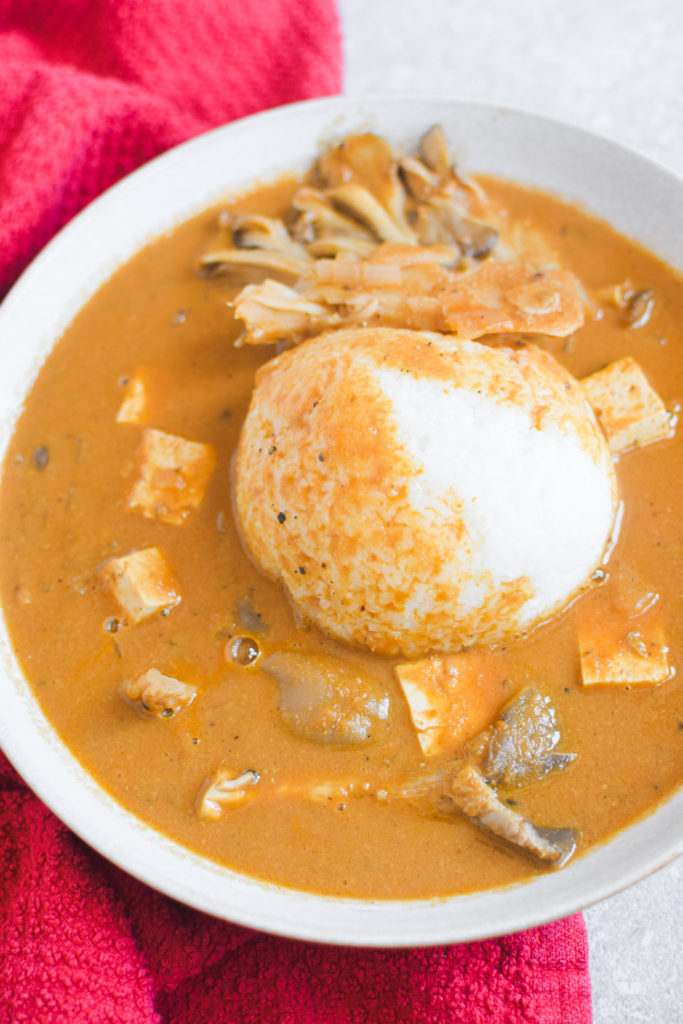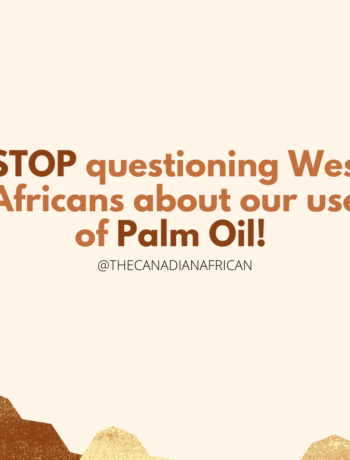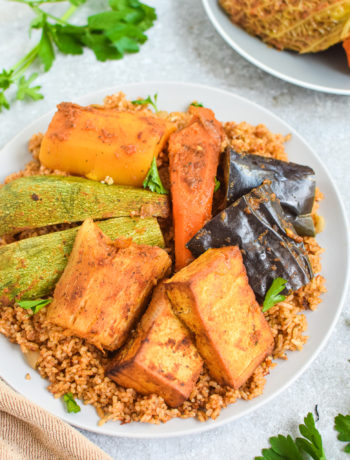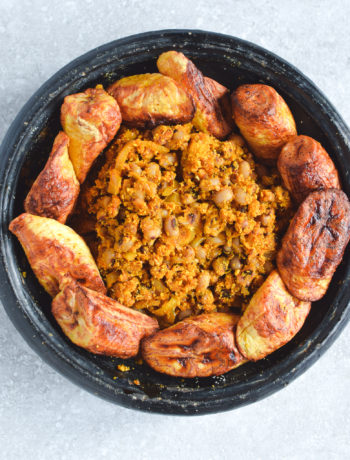“African Peanut Stew” has seemed like a palatable introduction to African cooking for the adventurous cook. If one was to search through Pinterest or google for African recipes, you will see multiple blogs with almost identical recipes of a quick peanut-based stew with some vegetables and greens.
Hidden behind all these perfectly manicured dishes is a big problem in the food world. The continuous misidentification of cultural foods and the perpetuation of terrible stereotypes of many food cultures in the global south — one being Africa.
Africa is not a monolith and neither is our food!
As a food blogger, I find it incredibly strange that one can simply find recipes for specific regions of European countries and think pieces about the differences in barbeque techniques within states in the US. Yet somehow, the only regional specificity one might get when it comes to African food is “West African Peanut stews.” European pies and North American soups do not exist but 1000s of the same vague rendition of African peanut stews flood the blogs and cookbooks of chefs who put on a facade of being culturally diverse with their food.
Have you ever heard of “European Pie” or “North American Stew”
Unfortunately, this stereotype is not just perpetuated by white female food bloggers but many POC food creators who may have little ties to the continent. There are also food bloggers from the African continent who might name their recipes “
African X” recipe because it will be easier for other people to notice the recipe rather than name it by an African country that many might not be familiar with. The western world pertuates a singular identity of Africa and food bloggers from the continent are forced to assimilate just to get their content seen. It is a never-ending cycle and trap.
People have continuously lumped Africa as one entity when it is is probably the most diverse continent in the world. As the second-largest continent, it is also the most diverse continent in this world. It has 54 countries that house 10s to 1000s of ethnic groups each, with different languages, cultures and cuisines. However colonialism and anti-African rhetoric has impacted the world’s view of Africa — giving it a singular identity.
What do peanut-based foods look like across West Africa?
Maafe
Give 10 different tribes across west Africa the same ingredients and you might get 10 different recipes. This is definitely the case with these peanut-based stews. What most people are representing as “West African Peanut Stews” or “African Peanut Stews” is probably loosely related to Maafé/Mafe/Domoda. But this is just a guess. These bloggers do not include countries of origin so I am 100% guessing. These are rich peanut-based stews eaten in Senegal/Mali/Gambia and Guinea. Groups in each country will make it differently. Depending on the country, or even region of the country, you might see just bouillon cubes or the more local fermented locust beans. These flavour choices alone can vastly change the taste between one region’s maafe and another regions maafe. These peanut-based stews are thick and full of flavour and vegetables. Vegetables range from carrots to aubergines, okra, cassava and many more root vegetables and starches.
No, these recipes do not usually include greens. At least not in this region. They are also usually accompanied by rice.
Sauce Arachide/ Groundnut Soup
As you travel along the coast of West Africa, peanut based foods go from sauce to soup. These are usually known as sauce d’arachide and vary greatly depending on the group making the soups. They can range in thickness and consistency depending on who is making it. In Ghana, we call it groundnut soup/ nkatiekwan (in Twi), and it is usually accompanied by a starchy rice ball or with fufu. These recipes are tomato-based and do not include any vegetables or root vegetables. My vegan-friendly version can be found here.

Green Peanut Stews (Ndole and Fumbwa)
Western to Central Africa has a variety of leafy stews that have peanuts in them. Ndole in Cameroon and Fubwa or Okok from the Congo or Cameroon are two dishes that come into mind. I know Congo is in Central Africa, but still wanted to highlight these dishes. These rich sauces are stewed for hours to break down greens indigenous to these regions (Ukazi and Bitterleaf), resulting in a creamy and delicious stew.
Now can you see the difference?
Just based on my very brief overview of peanut-based soups and stews across West Africa, it is already evident that these dishes do not resemble what is usually shared under African Peanut Stew recipes. I have not even touched on Eastern and Southern Africa where peanuts are added to a whole different variety of sauces, added to beans or even in some versions of a green plantain stew (Matoke) in Uganda. Yes they might have elements from each group I mentioned, but there is rarely a paper trail that helps us decipher which element is from which dish.
One might make the argument that since these dishes are incorporating elements of different peanut dishes, it is okay to give them a general regional name like “West African Peanut Stew.” To this I say, they are missing the point. Peanut recipes vary so greatly in the region in technique and final product that it can be hard to combine elements of each group to make one succint dish, without some acrobatics. I haven’t even gotten to how the foods are spiced and flavoured. Most of these stews use indigenous spices and ingredients that impart a unique taste to the dish that is hard to replicate with commonly found ingredients are a supermarket.
Therefore, these African peanut stews that are being vaguely shared have in any African food. Unless the food blogger specifies their inspiration, one will be hard-pressed to see what elements of the stews and soups I mentioned made it into their recipes.
Where do we go from here?
Like any recipe from a different culture, it is imperative to make known the origins and inspiration of these dishes. As we hold food bloggers more accountable for providing an accurate representation of cultural foods, we need to do the same for dishes from the African continent. The least one can do is mention the country or ethnic group their inspiration comes from. To use their recipe to honour this culture and not feed into MISINFORMATION. I have an entire series on how to create recipes from different cultures, which you can find here.


The point is to not feed into the same stereotype about Africa, which many people seem to lump together. Rather, through our food, we can connect people to the unique cultural foods of the different groups on the continent.
In this blog post, I focus entirely on African peanut stew but the same can be said for dishes named “Asian inspired” or even other false representations of rice based dishes across the continent.
Let me know what you think.




3 Comments
Mimi
September 30, 2021 at 1:01 amGreat post! Thank you for sharing your insight and knowledge. I’ve been guilty of making one of the many “peanut stews” floating out there. Pure willful ignorance. I am excited to try the recipe you linked in the post. I listened to the episode of Item 13 that you were in and I looked for the grocery options in my area and found a place close by that has items not found in traditional American grocery stores. Perfect time to give an actual try at making some new dishes. You’re doing great and I appreciate you!
Vic
November 8, 2021 at 7:37 amThank you for this post. Very appreciated.
Cultural appropriation
January 8, 2023 at 7:36 pmPeanuts are South American, acknowledge their true history.